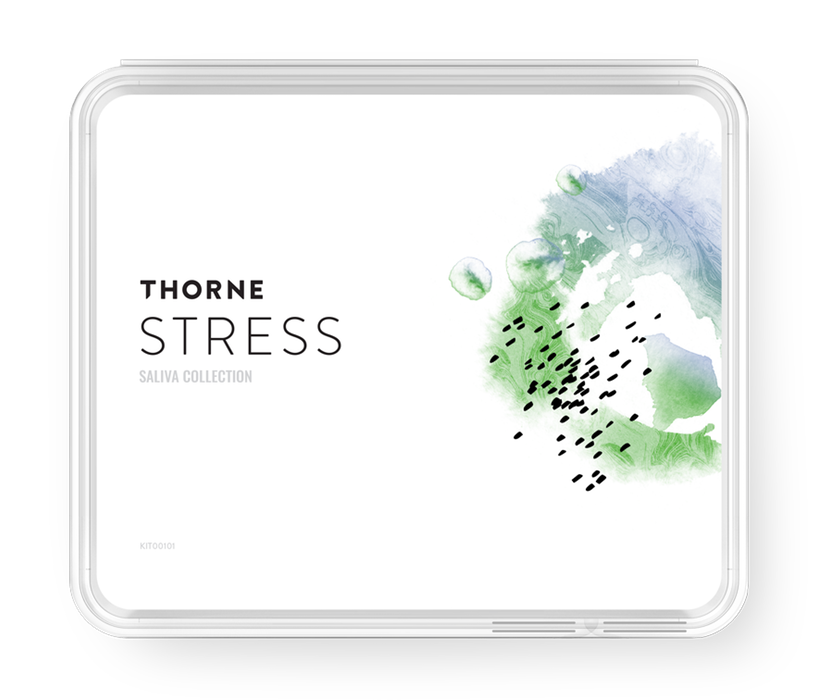Listen on: Apple Podcasts | Spotify
Like all hormones, cortisol plays a crucial role in your mental and physical health. Unfortunately, today’s lifestyles lead to severe imbalances in cortisol rhythms, which contribute to body fat gain, cognitive dysfunction, muscle loss, and much more.
Many health and fitness experts vilify cortisol. Some ignore its effects on your health.
In this article, I hope to clarify how it works and what you can do to manage it so you remain healthy, lean, and strong.
What is cortisol?
Practitioners often call cortisol your “stress hormone.” But such a nickname does a disservice to this hormone, which is crucial for your health, and important during times of stress and emergency.
When functioning normally, your adrenal glands secrete cortisol according to a circadian rhythm, which energizes your body during the day and helps it fall asleep at night.
Also, stress stimulates your hypothalamic-pituitary-adrenal (HPA) axis, ultimately causing your adrenal glands to secrete cortisol, adrenaline, and noradrenaline. This is why cortisol is so often called your stress hormone.
In healthy people, cortisol:
- alters the metabolism of carbohydrates, fat, and protein in favor of quick energy
- reduces inflammation
- increases blood pressure
- increases blood sugar, cholesterol, and triglycerides
- controls your sleep/wake cycle
- increases energy during times of stress
With disease and chronic stress, cortisol becomes destructive.
Stress and your circadian rhythm control cortisol levels more than anything else.
Stress and the HPA Access
Your nervous system functions between two extremes: sympathetic and parasympathetic.
Your sympathetic system, also known as your “fight or flight” system, sounds the alarm when you’re in danger. In addition to releasing cortisol, you also release adrenaline and noradrenaline, which increase alertness, focus, energy, and reflexes.
Your sympathetic nervous system also shuts down anything that isn’t necessary for survival, such as digestion, your immune system, and your ability to sleep.
At the other extreme, your parasympathetic nervous system helps you relax, recover, digest food, sleep, and remain calm. More often than not, when people want to improve their mental health, they look for supplements or essential oils that stimulate the parasympathetic nervous system.
Each person naturally operates at some point between the two extremes. You can probably think of a few friends who seem frantic all of the time and others who you’ve never seen rattled.
Living for too long in either extreme leads to problems.
Cortisol is part of a larger system of stress management. Focusing only on cortisol, if stress is a problem, addresses only one piece of a larger problem. This is why certain supplements like “cortisol blockers” don’t work. They do nothing to impact adrenaline or noradrenaline, which are also secreted during stressful events.
Short-term stress, such as passing a test, an intense strength training session, or dealing with a cyberbully help you grow stronger, provided the stressor stops, and you’re able to rest and recover.
I need to stress this point because our society has grown progressively fearful of “stress,” to the point that a Facebook outage or an off-putting comment becomes a self-induced catastrophe. During such situations, you’re better off with a little suckituptitude so you can more easily handle a similar situation the next time.
Cortisol and Circadian Rhythm
Your hypothalamus and pituitary gland measure cortisol levels in your blood, which vary throughout a 24-hour cycle.
In a healthy person, levels quickly rise for the first 30-45 minutes after waking up, called the cortisol awakening response (CAR). The increased hormone levels help energize you physically and mentally.
As the day progresses, levels fall, reaching a low point as you go to bed.
Your cortisol rhythm is supposed to move in concert with your circadian rhythm.
Not surprisingly, when you mess up your circadian rhythm, you disrupt your cortisol rhythm. And visa versa.
How to Measure Cortisol Levels
Some doctors measure cortisol levels in hair to assess long-term cortisol exposure. Though this measurement method helps identify long-term exposure, it isn’t helpful in determining daily cortisol rhythm.
You can also measure cortisol through a blood test, which is usually performed in the early morning. The blood test helps identify one’s morning levels, but you still don’t get a picture of how your cortisol levels vary throughout the day.
The most common and valuable method of testing cortisol is a 4-point salivary cortisol test. By testing the cortisol in your saliva first thing in the morning, just before bed, and at two points in between, you get a picture of how your cortisol levels change throughout the day.
If you’re healthy, your cortisol will peak after waking up, gradually decrease throughout the morning, and then drop significantly as the afternoon and evening progress.
You can conveniently test your cortisol at home.
Symptoms of Low Cortisol
The most common cause of low cortisol is suddenly stopping the use of corticosteroids. Adrenal fatigue also leads to low cortisol. Outside of these two causes, other causes of low cortisol can be extremely serious and demand a visit with a physician. The following are symptoms of low cortisol.
| Symptoms of Low Cortisol | |
|---|---|
| Abdominal pain | Chronic fatigue |
| Craving salty foods | Depression |
| Diarrhea | Dizziness or fainting |
| Irregular or no menstrual periods (women) | Irritability |
| Joint pain | Loss of appetite |
| Low blood pressure | Low blood sugar (hypoglycemia) |
| Low or no libido | Muscle weakness |
| Nausea | Vomiting |
| Weight loss | |
Symptoms of High Cortisol
I worked with many clients over the years who had visible signs of high stress. The image that comes to mind first is someone with skinny arms and legs and a round belly, resulting from muscle loss and increased visceral fat. The following are symptoms of high cortisol.
| Symptoms of High Cortisol | |
|---|---|
| Anxiety | Bone loss (osteoporosis) |
| Consistent thirst | Depression or irritability |
| Flushed and round face | High blood pressure |
| Increased body fat, especially in the belly, face, and chest | Loss of strength |
| Muscle loss | “Thin” skin, which bruises easily |
Symptoms of Cushing Syndrome
When high cortisol remains uncontrolled, it may lead to Cushing Syndrome. Cushing’s is a serious condition and should be treated by a medical professional. The following are symptoms of Cushing Syndrome.
| Symptoms of Cushing Syndrome | |
|---|---|
| Acne | Body fat gain in midsection, upper back, face (“moon face”), and between the shoulders (“buffalo hump”) |
| Cognitive dysfunction | Decreased libido |
| Erectile dysfunction (men) | Fatigue |
| Fragile skin that bruises easily | Impaired growth (children) |
| Increased skin pigmentation | Menstrual irregularity (women) |
| Pink or purple stretch marks on the skin of upper body | Skin that heals slowly and is more prone to infection |
| Visible body and facial hair (women) | |
Long-term corticosteroid use can cause high cortisol levels and may even contribute to Cushing Syndrome.
How Cortisol Helps You
To be clear, cortisol is not inherently “bad.” An imbalance of cortisol is bad. Cortisol plays a crucial role in maintaining health. It:
- Increases mental and physical energy, preparing you for everyday activities or to deal with physical or mental threats
- Raises blood sugar when it falls to low levels
- Reduces inflammation, helping you recover from short-term injuries and physical stressors
- Increases physical strength
- Mobilizes stored energy, which helps burn body fat
As long as you periodically release high cortisol levels by waking up at the same time each morning and exercising appropriately, cortisol does more good than harm.
However, when cortisol levels remain high for too long or cortisol is stimulated too often, it can cause more harm than good.
How Cortisol Hurts You
When cortisol rises and falls like its supposed to, it contributes to your health. But, if cortisol levels remain chronically elevated, cortisol’s effects on your tissues and metabolism contribute to many health problems. Elevated cortisol contributes to the following health problems:
- Cognitive dysfunction: Chronically elevated cortisol may contribute to Alzheimer’s disease, dementia, and other cognitive problems, especially in older adults.
- Hair loss: Elevated cortisol degrades hyaluronans and proteoglycans, and reduces their synthesis. A reduction in these two hair follicle modulators causes hair loss. Reducing elevated cortisol improves hair growth.
- Headaches: There’s a strong correlation between elevated cortisol and migraine headaches. However, researchers have not yet determined whether the headaches are caused by cortisol, or by something else related to the body’s stress response.
- Heart disease: Cortisol increases blood pressure, blood sugar, cholesterol, and triglycerides, while also increasing visceral fat. This is an ideal combination to damage blood vessels and cause heart disease.
- Increases belly fat: Prolonged cortisol exposure increases visceral or “belly” fat which is a special kind of fat that covers the organs in your belly. Visceral fat causes systemic inflammation, which leads to other chronic diseases.
- Increases pain: Long-term cortisol exposure increases pain. This might be due to increased inflammation or to something else.
- Muscle loss: Cortisol stimulates muscle catabolism, which releases amino acids into the bloodstream. This is helpful during times of starvation, but not when you’re simply stressed out about everyday life. My first rule with VIGOR Training is “Don’t lose muscle.” Keeping cortisol in check aligns well with that rule.
- Reduces thyroid production: Elevated cortisol reduces absorption of nutrients needed for thyroid function, and reduces thyroid-stimulating hormone (TSH).
How to Maintain Healthy Cortisol Levels
Like most problems we face, most cortisol problems are self-inflicted. Our lifestyle choices, nutrition habits, and ways we think about our problems create the stress that triggers cortisol imbalance.
But that’s not the case for everyone. Tumors, genetic anomalies, medications, and toxins may also lead to cortisol imbalance. If you find yourself among this group, see a doctor right away.
If you believe your cortisol imbalance comes from your own choices, start with the following:
1. Guard your sleep
Inconsistent or insufficient sleep wreaks havoc on your circadian rhythm. Go to bed at a consistent time and get no less than seven hours of sleep for several weeks in a row. It could be life-changing. I’ve seen this work for so many clients over the years.
For more about sleep and how to get more of it, read this blog post.
2. Lose weight
Overweight and obesity cause pain. The extra weight on your joints day in and day out causes pain and inflammation. Pain causes a stress response, and chronically high cortisol increases pain sensation, triggering more of a stress response.
Most people can maintain a healthy weight by consistently getting enough sleep, eating a high-protein diet, and following a well-designed exercise program like VIGOR Training. However, if you’ve been consistent with those three habits for several months and aren’t seeing the results you’re hoping for, ask your doctor for a complete hormone panel. I recommend you use this test from WellnessFX as a reference with your doctor. If your doctor won’t order the labs, then I suggest ordering the labs directly from WellnessFX.
3. Deal with your stress
Our ability to deal with stress is relative to the level of stress we’ve dealt with. Many older adults seem almost un-rattleable. If they lived through the Great Depression, World War II, the Vietnam War, and other major events of the fist half of the 20th century, the challenges of life today seem pretty tame.
However, younger adults who never dealt with poverty, loss, or other hard times can get rattled by stuff that really isn’t that significant. If Facebook crashes for the day, you can’t get access to Wi-Fi, or someone said something mean to you, you might have to develop a little suckituptitude.
The faster you deal with your stress, the faster you can work towards a solution to fix the problem that caused the stress in the first place.
4. Go for a walk in the woods or diffuse some essential oils
During the 1980s, the Japanese popularized a preventative health practice called Shinrin-Yoku, better known as Forest Bathing. Research shows the act of spending time in the woods improves mental and physical health.
In addition to being in an environment away from our modern lifestyles and smartphones, the forest also presents smells and sounds that soothe your body and mind. Many of the smells come from the essential oils of the plants in the forests.
So, if it’s not practical to head to the forest, you can partially bring it indoors with you. Inhaling essential oils from coniferous trees and plants such as lavender, orange, and rose significantly reduces stress and cortisol levels.
References
Adam, Emma K., et al. “Diurnal Cortisol Slopes and Mental and Physical Health Outcomes: A Systematic Review and Meta-Analysis.” Psychoneuroendocrinology, vol. 83, Sept. 2017, pp. 25–41. PubMed, doi:10.1016/j.psyneuen.2017.05.018.
De Tollenaere, Morgane, et al. “Well-Aging: A New Strategy for Skin Homeostasis under Multi-Stressed Conditions.” Journal of Cosmetic Dermatology, vol. 19, no. 2, Feb. 2020, pp. 444–55. PubMed, doi:10.1111/jocd.13047.
Ennis, Gilda E., et al. “The Cortisol Awakening Response and Cognition across the Adult Lifespan.” Brain and Cognition, vol. 105, June 2016, pp. 66–77. PubMed Central, doi:10.1016/j.bandc.2016.04.001.
Fukuda, S., and K. Morimoto. “Lifestyle, Stress and Cortisol Response: Review II : Lifestyle.” Environmental Health and Preventive Medicine, vol. 6, no. 1, Apr. 2001, pp. 15–21. PubMed, doi:10.1007/BF02897304.
Grymowicz, Monika, et al. “Hormonal Effects on Hair Follicles.” International Journal of Molecular Sciences, vol. 21, no. 15, July 2020. PubMed Central, doi:10.3390/ijms21155342.
Hannibal, Kara E., and Mark D. Bishop. “Chronic Stress, Cortisol Dysfunction, and Pain: A Psychoneuroendocrine Rationale for Stress Management in Pain Rehabilitation.” Physical Therapy, vol. 94, no. 12, Dec. 2014, pp. 1816–25. PubMed Central, doi:10.2522/ptj.20130597.
Hansen, Margaret M., et al. “Shinrin-Yoku (Forest Bathing) and Nature Therapy: A State-of-the-Art Review.” International Journal of Environmental Research and Public Health, vol. 14, no. 8, Aug. 2017. PubMed Central, doi:10.3390/ijerph14080851.
Iob, Eleonora, and Andrew Steptoe. “Cardiovascular Disease and Hair Cortisol: A Novel Biomarker of Chronic Stress.” Current Cardiology Reports, vol. 21, no. 10, 2019. PubMed Central, doi:10.1007/s11886-019-1208-7.
Ouanes, Sami, and Julius Popp. “High Cortisol and the Risk of Dementia and Alzheimer’s Disease: A Review of the Literature.” Frontiers in Aging Neuroscience, vol. 11, 2019, p. 43. PubMed, doi:10.3389/fnagi.2019.00043.
“Symptoms and Causes of Adrenal Insufficiency & Addison’s Disease | NIDDK.” National Institute of Diabetes and Digestive and Kidney Diseases, https://www.niddk.nih.gov/health-information/endocrine-diseases/adrenal-insufficiency-addisons-disease/symptoms-causes. Accessed 2 Feb. 2021.
“What Is Cortisol?” WebMD, https://www.webmd.com/a-to-z-guides/what-is-cortisol. Accessed 1 Feb. 2021.
Photo by Zhang Kenny on Unsplash




